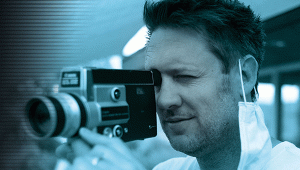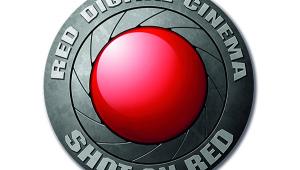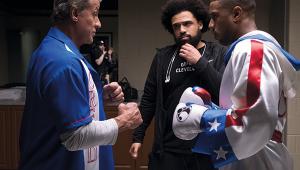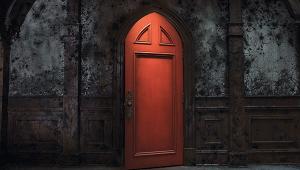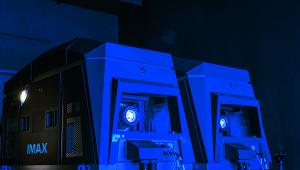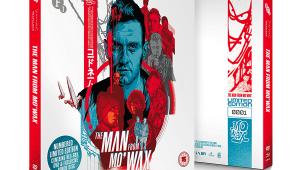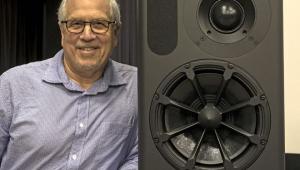Restoring films for Blu-ray

With a body of work that includes restorations for the BFI and Masters of Cinema, White recently joined forces with Arrow Video as Restoration Supervisor on a raft of cult movies.
Following a sneak peek at clips from some of the projects he is currently working on for Arrow (Time Bandits! White of the Eye!), Anton van Beek had the pleasure of sitting down with White to discuss his work with Arrow Video and how the label is reinventing itself...
The past decade has seen a huge shift from photochemical to digital restoration. What has that been like from an insider's point of view?
'When I started, restoration was approximately 80 per cent photochemical, 20 per cent digital. Today it's the complete opposite. I was fortunate to come along just as that transition was happening. So I already had a grounding in photochemical labs and working hands-on with film. That knowledge has proved extremely useful in letting me know how digital technology could have an impact upon film both positively and negatively.
'Early digital restoration software was fairly crude and didn't treat the photochemical image with the kind of respect and sensitivity that you'd require these days. Fortunately the tools have become much more sophisticated since then.'
Is there still anything that digital restoration doesn’t offer that photochemical did?
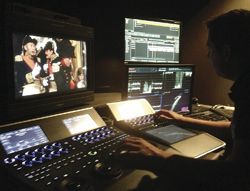 'Whenever you're dealing with digital, you’re dealing with an approximation of what that film image should be. As advanced as digital technology has become, there's something intrinsically different about how light interacts with silver halide crystals and gelatin. The organic chemistry of that process, the rawness of it, always produces results that digital technology can only approximate so far.
'Whenever you're dealing with digital, you’re dealing with an approximation of what that film image should be. As advanced as digital technology has become, there's something intrinsically different about how light interacts with silver halide crystals and gelatin. The organic chemistry of that process, the rawness of it, always produces results that digital technology can only approximate so far.
'That said, we can do things in digital today that we could never have done just a few years ago. For the most part, the rapid development of digital restoration – and I know that I'm arguing against a few traditionalists here - has been amazing for film. We can now resolve issues on films that we could only tackle so far with photochemical means. I'm talking about severe film damage, missing or damaged frames, stability and density issues, etc...'
So how worrying is the notion that people working in restoration in years to come may not have any first-hand knowledge of film?
'It's definitely a concern. The more knowledge you have of the original material you’re working from, the better you’re going to serve that material. If someone doesn't have a photochemical grounding in film history and technology, then the results of their work will inevitably suffer.
'You see this sort of things all the time on web forums, where issues such as film grain, image sharpness, and aspect ratio are endlessly debated. A lot of the time it’s coming from a place where someone might be privy to a little bit of information but he's using this to cast blanket judgments over absolutely everything.
'For the record, film grain is not the same from film to film nor is it from element to element. We have over 100 years of films to deal with, and the light sensitivity, the speed of the film and the grain is going to change like anything else.
'The best thing I can do when restoring a film is make that film look as close to what it looked like in theatres at the time that it was released. For me, that's always the goal.'
So where do you stand on the subject of making alterations to films during restoration, such as painting out wires?
'Well, I’m against alterations in general unless they were always part of the original film. There’s a good example of this from 1939's The Wizard of Oz. When Warner Brothers produced a new restoration in 4K a few years ago you could suddenly see support wires that were never visible before.
'Now it goes without saying that when Victor Fleming shot the film, he knew that by the time you'd gone through several stages of photochemical printing the wires would be invisible. It's just a by-product of the fact that we can work directly from the negative materials in a lossless fashion these days. So in this instance I believe it's valid to go in and paint those wires out, as the filmmakers clearly never meant them to be seen.
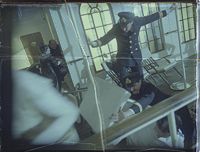
'That said, we came across a funny example just a couple of days ago, when I was working with Terry Gilliam on the new Time Bandits restoration. There's a scene in the Sherwood Forest section, where if you look just to the right of the frame you can see the technician and his smoke machine contraption sitting there, clear as day.
'Where I draw the line is when a filmmaker or studio wants to use the restoration process to "improve" or "update" the materials in some way. I don't subscribe to the idea that a film "belongs" to any one filmmaker, studio or otherwise.
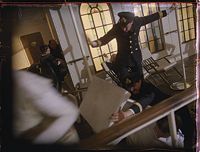
'Once a film’s been released, then I consider it a part of film history, and my job is to serve that history as accurately and truthfully as possible.'
It must have been a huge help to have Terry Gilliam directly involved in the restoration.
'He's been terrific to work with. He's been very busy on his new film, because the guy never stops, but was immensely supportive and helpful. It's always great to have a filmmaker involved in the process.
'But the truth is that when you’re in the business of film restoration, you're nearly always working on films by old dead guys. That’s just the way it is. Which is why it’s so important to be as well-researched as possible on whatever film you’re working on.'
Going back to the topic of altering films for Blu-ray, where do you stand on the 'DNR' debate?
'DNR is an umbrella term that describes a number of different software programmes. If it's used with sensitivity and restraint, it can be a big help for getting rid of dirt, sparkle and minor debris. We occasionally use HD-DVNR for this, but we use this tool cautiously and sparingly, altering the settings from shot to shot and often frame by frame, to ensure that nothing we do results in the reduction or loss of original detail or film grain, or the creation of unwanted digital artefacts.
'Too often, poor restoration work is the result of an operator simply running the entire film through a very high DNR setting to remove as much dirt or damage as possible, which almost always results in a compromised image. The same goes for the practice of de-graining, re-graining or any form of digital "sharpening". You may remove the dirt, but the film no longer looks like film. If you like film then you have to like the look of film. Film is grain, that's what it's made of. We should celebrate that.'
I doubt that Arrow can finance restorations to the same levels as Hollywood studios, yet you often deliver results that put the majors to shame.
'Thanks! Arrow really pushed the boat out with Zombie Flesh-Eaters last year, and part of that was a way of them saying, "No more mediocre masters. We want to recreate the label. We want to put our focus on high-quality presentations of classic and cult cinema". In a way, they’ve worked hard to become something like the cult version of the Criterion Collection, and I think they’re doing a great job.
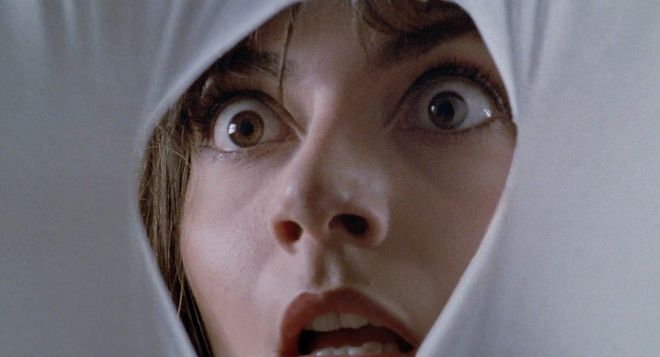
Absolutely, because it's not always been smooth sailing. There have been problems in the past. Just look at some of the Dario Argento Blu-rays...
'Those were before my time at Arrow, but with a lot of those early masters - Tenebrae and a few others - a lot of those criticisms were valid. But people should understand that Arrow weren't personally responsible for those masters. They sub-licensed those titles from the rightsholders and it was either put them out with the masters they'd been supplied with or not release them at all. It's an unfortunate position that a lot of independent labels find themselves in.
'It's a shame, because a lot of those titles would look so good if they were properly restored. But take another famous Argento title that Arrow didn’t do - Suspiria - man, that one needs help. It's a title that was restored a couple years ago to someone’s own ideas about colour and grain management, etc. But honestly, I thought it looked horrible. It's one of the pinnacles of Argento’s filmography, but it clearly needs to be done over again. So I would love the chance to do it if Arrow ever got the rights to it.'
Arrow is also doing an excellent job of building relationships with major studios, such as MGM, and getting access to their film catalogues.
'I think that the future of Blu-ray, and whatever life DVD has left, is really down to small companies like Arrow, Masters of Cinema, Olive, BFI and Criterion.
'You can't count on the majors to pay attention to anything but the same tent-pole titles these days. So it's up to these small labels to give the smaller – but equally deserving titles – the attention they deserve.
'I mean, it's great that we’re getting amazing Blu-ray editions of Casablanca, Singin' in the Rain and Lawrence of Arabia at the moment. But what about less well known, but equally great films like Out of the Past, The Gang’s All Here or Madigan?'
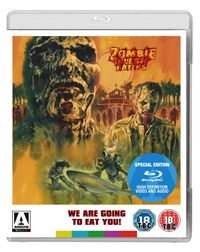
Going back to Zombie Flesh-Eaters, your restoration was a real eye-opener that made me realise what a beautifully shot film it is.
'That's great to hear, because [cinematographer] Sergio Salvati did a great job shooting that film under difficult circumstances. And [director] Lucio Fulci has an amazing eye and I think it's one of his greatest films. It was an honour and a pleasure to work on that film.
'We were very fortunate that the licensor gave us access to the original Techniscope negatives. According to their records, they hadn't been accessed since the film was produced in 1979…'
There was a bit of discussion about that given the claims that Blue Underground made about its prior US Blu-ray release being based on 'a new 2K scan of the original... camera negative.'
'Yeah, there was quite a bit of discussion! I don't know the full story, because I haven't spoken to Blue Underground, but the Italian rightsholder, who had owned the film from day one, claimed to have never heard of the label. So if Blue Underground ever got access to that element, all I can say is that they certainly didn't do it directly.
'We looked at Blue Underground's master throughout the process, because up until that point it was the best release of the film available. But we were struck with how overly saturated it appeared and how much image area seemed to be missing. The grain structure also appeared quite different. So I’m not sure what it was they were working from.
'Zombie Flesh-Eaters was shot 2-perf Techniscope, which was a low-budget alternative to Cinemascope popular throughout Europe in the 1960s and '70s because you'd only expose half the standard amount of film. After developing the negative, you'd then blow that up to 4-perf for all remaining stages in the printing chain. So, in a sense, everything you work with after the negative is a blow-up. Working from any element other than the negative means would mean an inferior image resolution, as well as significant cropping.'

What shape was the negative in?
'It had a lot of issues. There were frame jumps on literally every cut, thanks to the nature of how it was produced. There were a lot of dirt, scratches, and density issues. And there was some stuff we were only able to improve so far, such as the classic scene with the woman, the shark and the zombie.
'This section of the film was shot by a second unit with underwater cameras, and somewhere along the line - either in shooting or initial development - a yellow processing artefact resulted that has been there in the film ever since. It's been played down in previous video incarnations because of the loss of resolution, but in our version, when you’re looking at everything captured straight from the negative, you can see the damage for what it is. Now, hopefully, you’re too busy watching a naked woman, a shark and a zombie without getting distracted much by anything else!'
Looking at another recent Arrow release, Mario Bava's Black Sunday, are there any specific challenges that come from working on a black-and-white film?
'The thing to keep in mind is that, just like colour, black-and-white is not exactly the same from film to film. If I restore a film from 1920, I want it to look like 1920s black-and-white. The same goes for a film from 1960, like Black Sunday.
'So, when you're dealing with issues of greyscale and contrast it all comes down to what that film originally looked like and the age it was made in. I've restored older films where the palette is more like several shades of grey rather than extreme black and white. They didn't have the means to push contrast to same levels back then. The film stock just wasn't capable of delivering images in that way.'
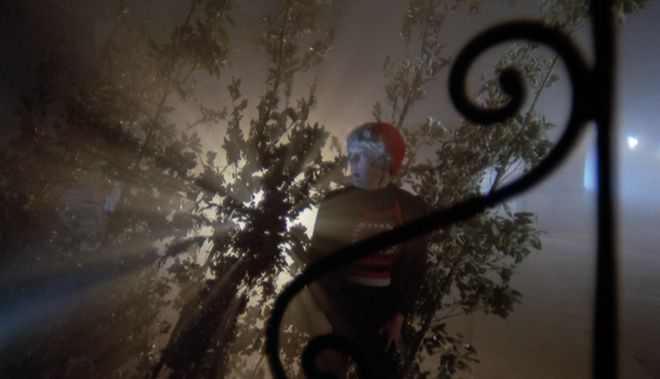
You recently worked on two more Bava titles, Baron Blood and Black Sabbath. With regards to the former, I understand that some of the restoration work had already been done by Kino-Lorber in the US. Can you elaborate on that?
'Well, Arrow has plans to release everything, every single Bava film. I can't say how long it's going to take, and I can't attest to the quality of every master either. The thing with Bava is, he made so many films and some were made with sizeable budgets and some very small. And as a consequence, some of his films have been well looked after, while others have not. So the masters reflect this.
'But regardless of the origins of any particular film, we'll be doing our best to release it in the highest quality and most definitive presentation possible.
'In the case of Baron Blood, Kino-Lorber digitally transferred the film from a CRI [color reversal internegative] 35mm element. I’m not sure why, but it's entirely possible that the negative is in horrible shape and working from the internegative may have been the best possibility available to them.
'Upon examining the master, we decided to go the extra mile and clean up the image a bit further, without disturbing or manipulating grain of detail. The improvements we made were fairly minor, but again it’s about giving a film the best possible presentation - which extends to including all three versions of the film on the Blu-ray.'
Do you have the option of going back to the source material if need be?
'Whenever we're presented with a master that we feel is seriously compromised, we'll attempt to go back to the original film materials and do the restoration ourselves. This hasn't yet happened with Bava though.'
Baron Blood's opening titles look particularly rough, even considering the problems you typically encounter with opticals of that type.
'Yeah, there's a lot of frozen dirt in Baron Blood's titles. When you’re making the optical, you're talking about putting one layer of film on top of another, creating a new second-generation element from these alternate sources. So if anything is trapped in between, like dirt, it stays there. With Baron Blood, it looks almost like somebody was eating their lunch over their work and the crumbs just got stuck in the film [laughs]. All I can say is, that it's always looked that way in the finished picture.'
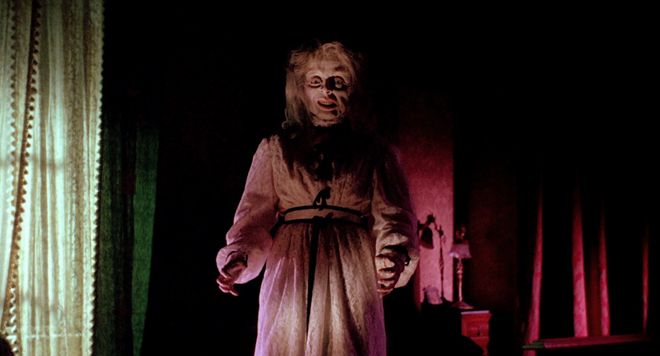
From what I've heard, Black Sabbath turned out to be a particularly challenging restoration...
'Actually, that's putting it mildly! Black Sabbath underwent a photochemical restoration in Italy resulting in a new preservation element, which was used for the source of the HD master we received.
'Unfortunately it became clear after viewing just the first few minutes that the film still needed urgent help. There were still heavy dirt, light scratches and stability issues on show throughout. The audio contained pops, crackles and fuzz from start to finish. Two of the stories in the film even appeared in the wrong order! Most troubling, however, was the colour, which was flat, milky and dull.
'Now as any fan knows, Mario Bava used colour in a very distinct way, with bold reds, lurid purples and deep, rich saturation throughout, giving his films a striking, dream-like look, of which Black Sabbath is one of the most iconic examples. So, basically, we had to get the film back to its proper definitive presentation. With the assistance of Bava expert Tim Lucas on the finer points of colour, I feel satisfied that we've achieved that.
'That said, it shows how important it is to thoroughly examine the materials you're presented with on any project. And it's to Arrow's credit that they went that extra mile to make Black Sabbath the best and most definitive Blu-ray it could be.'
I presume that this varied nature of the source material you deal with means that restoration budgets are assigned on a case-by-case nature.
'Absolutely. A film like Zombie Flesh-Eaters, with the format it was shot in and the amount of damage we were dealing with, is going to cost a bit more than something not suffering from these same issues.
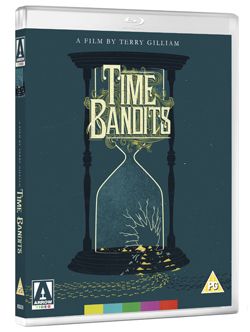
'We're currently working on another restoration for the 1987 Donald Cammell film White of the Eye. He was an amazing talent with a truly unique vision and it's a really interesting film. Anyway, the amount of clean-up there has been much less intensive, but it's still a full restoration made straight from the original negative. And I have to say, it's looking pretty great - probably a lot better than people ever thought possible, considering its cult status. I'm pretty proud of that one.
'Time Bandits is getting the banner treatment. It's being fully restored and delivered in 2K, which will act as the DCP [Digital Cinema Package] for the theatrical release and the HD master that serves as the basis for the Blu-ray release.
'One thing that I find really impressive, though, is the lengths that Arrow goes to in order to present these films in all their different incarnations. So that means going for alternate cuts, alternate takes, international versions, you name it.
'The Bava releases are a case in point. I can't see anyone else going to such lengths to present these titles as comprehensively as Arrow has.'
Can you tell us anything else about the future projects we can look forward to that you're working on for Arrow?
'Well, there's a lot of Brian De Palma stuff coming up, including the legendary Dressed to Kill. Some of it I've had a hand in, including Sisters, one of my personal favourites of his. The Mario Bava films I've already mentioned. There are going to be more restorations for key films in the HandMade Films library. And there's a very exciting project underway to do with an important figure in Eastern European film - but I'm afraid I can’t say any more about that one for now!'
To wrap things up, is there one dream restoration project you'd love to work on?
'Like a lot of people, the film that first got me into thinking about film restoration as a profession was Orson Welles’ The Magnificent Ambersons.
'It's arguably one of the greatest American films ever made, yet it was cut from its 135-minute length down to a measly 88-minutes. And to this day nobody knows what happened to the missing footage. The detective story angle really got me hooked, so it goes without saying that I'd love to be involved in any full restoration of that film.
'What else? There are so many films that I'd love to restore simply because I adore the films. Fat City, Seconds. Pitfall, The Lusty Men, Imitation of Life, Les bonnes femmes (The Good Time Girls), Sandra, Detour... So many wonderful films!
 'I’d also love to do a proper restoration of Night of the Living Dead. It's already been released on Blu-ray a couple of times by the likes of Network and StudioCanal (née Optimum Releasing), but none of them are right. It's been out of copyright for years, which is part of the problem.
'I’d also love to do a proper restoration of Night of the Living Dead. It's already been released on Blu-ray a couple of times by the likes of Network and StudioCanal (née Optimum Releasing), but none of them are right. It's been out of copyright for years, which is part of the problem.
'However, the original materials are still with [director] George Romero and his producer. So, hopefully, one day we can see a proper release done at the level it deserves. Because that film - the film that arguably ushered in the new wave of modern horror more than any other - should look and sound a lot better than it currently does.'
The one I'm always hoping for is The Keep, which I also think would be a great fit for Arrow.
'The Michael Mann film? Great choice! I'd love to work on that one. I've only ever seen it once and it was on crappy VHS, but it's definitely a diamond in his catalogue that needs a proper re-evaluation. And of course you'd have to get Mann involved to do it right. But you know, it actually would make a fantastic Arrow title.'
James White’s restoration of Time Bandits is released in cinemas this Summer and on Blu-ray and DVD on August 19. For further information on all forthcoming Arrow titles, visit www.arrowfilms.co.uk, Facebook.com/ArrowVideo and Twitter.com/ArrowFilmsVideo
This article first appeared in the July 2013 issue of Home Cinema Choice
 |
Home Cinema Choice #351 is on sale now, featuring: Samsung S95D flagship OLED TV; Ascendo loudspeakers; Pioneer VSA-LX805 AV receiver; UST projector roundup; 2024’s summer movies; Conan 4K; and more
|


